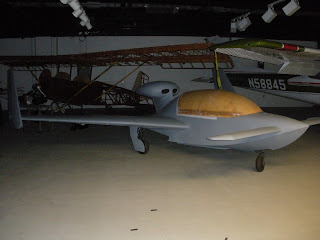Sometimes the project slows to a crawl, often because of a single task that is just plain stubborn. Case in point, the front of the glider needs a metal cross brace removed so the instructor can sit where the engine used to reside.
Diagonal cross brace in the very front of the fuselage.
So, this should not be a very difficult job . . . just take a hack saw and cut it out, right? Okay, but first let's remind ourselves that we need to remove the cross brace, and not anything else. There lies the problem. look carefully at the picture below.
Cross brace, upper left end.
Both ends of the cross brace have been welded in place with a large washer on top.
Vertical cut.
Horizontal cut.
Now cut the other end.
Horizontal and vertical cuts on the other end.
A little more needs to be cut, and then it will be free. Then the hard part starts. Stay tuned.





















